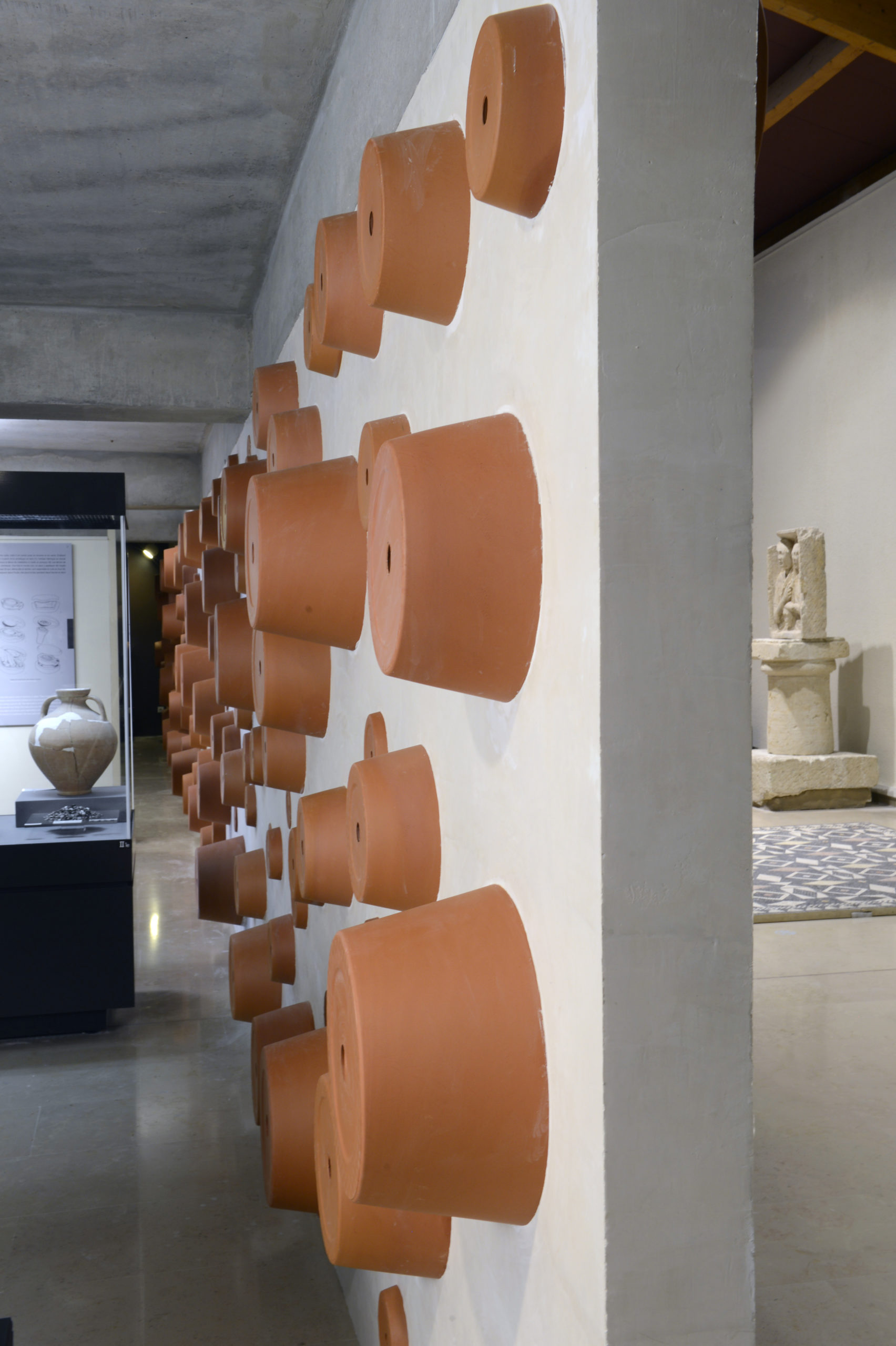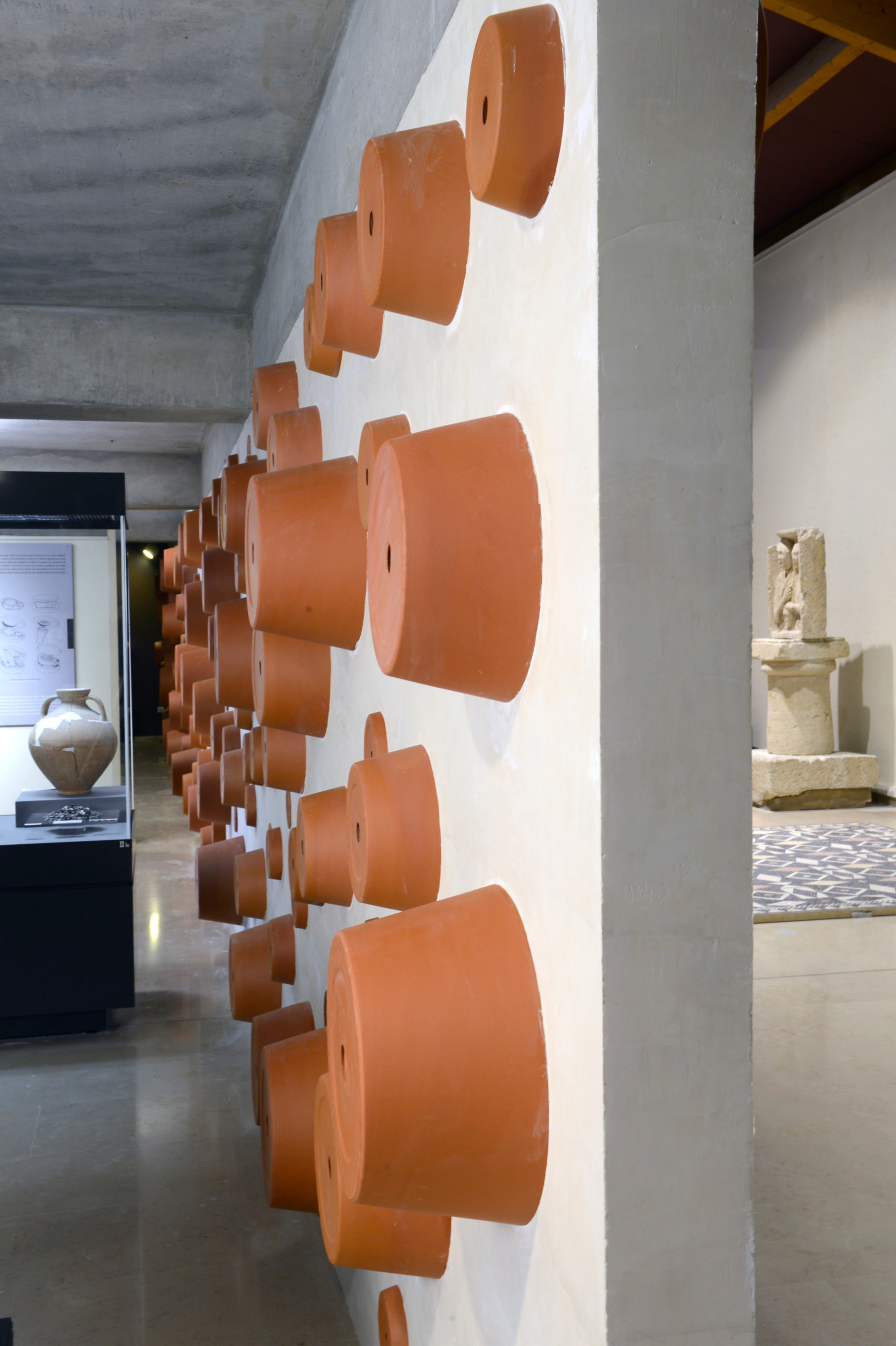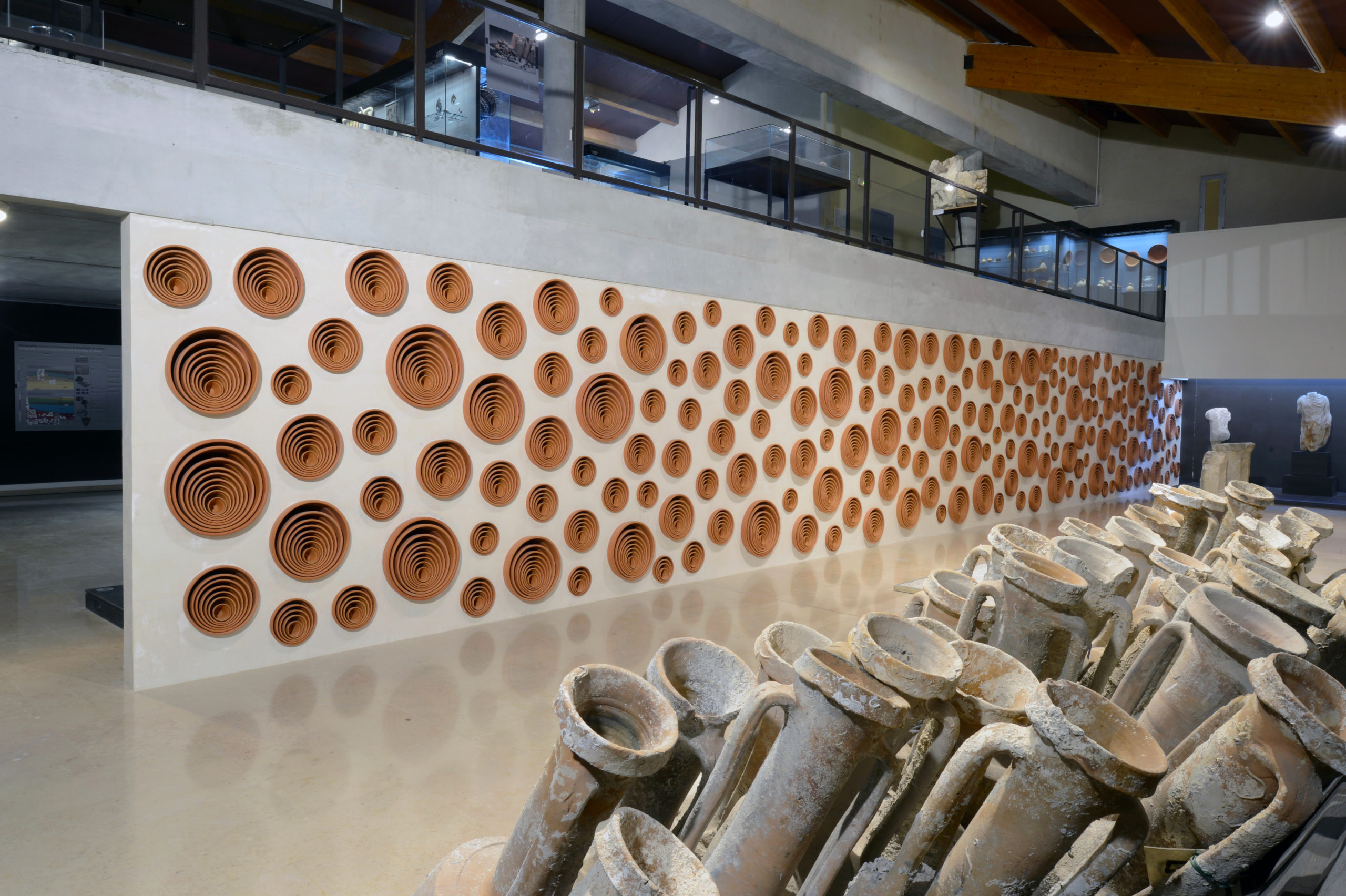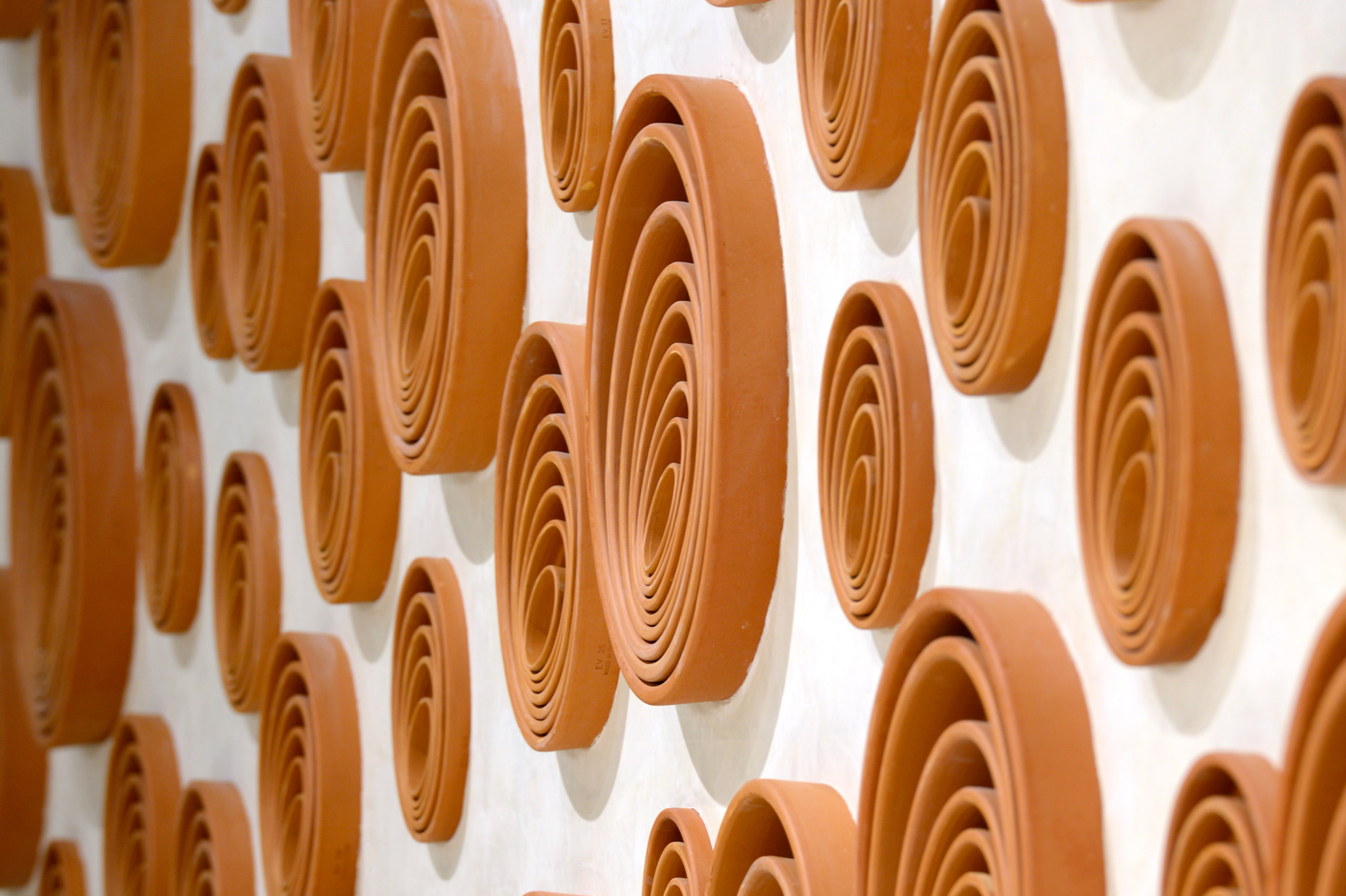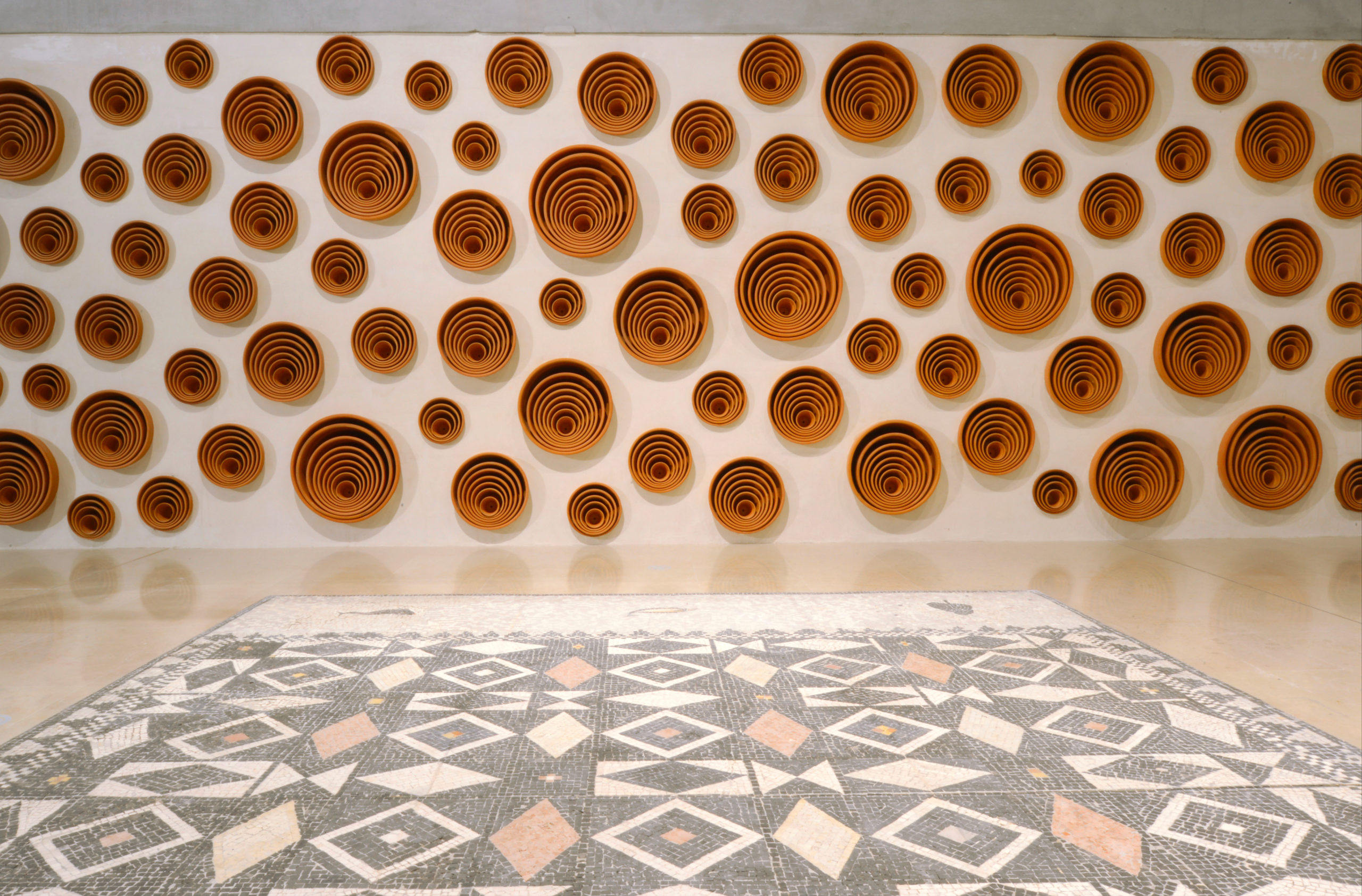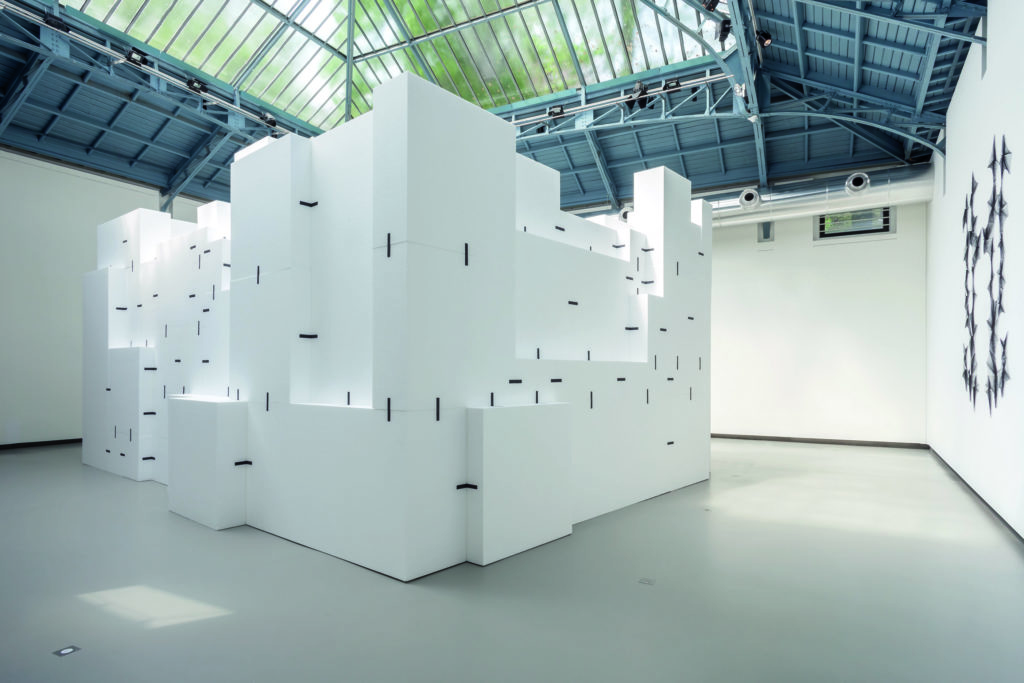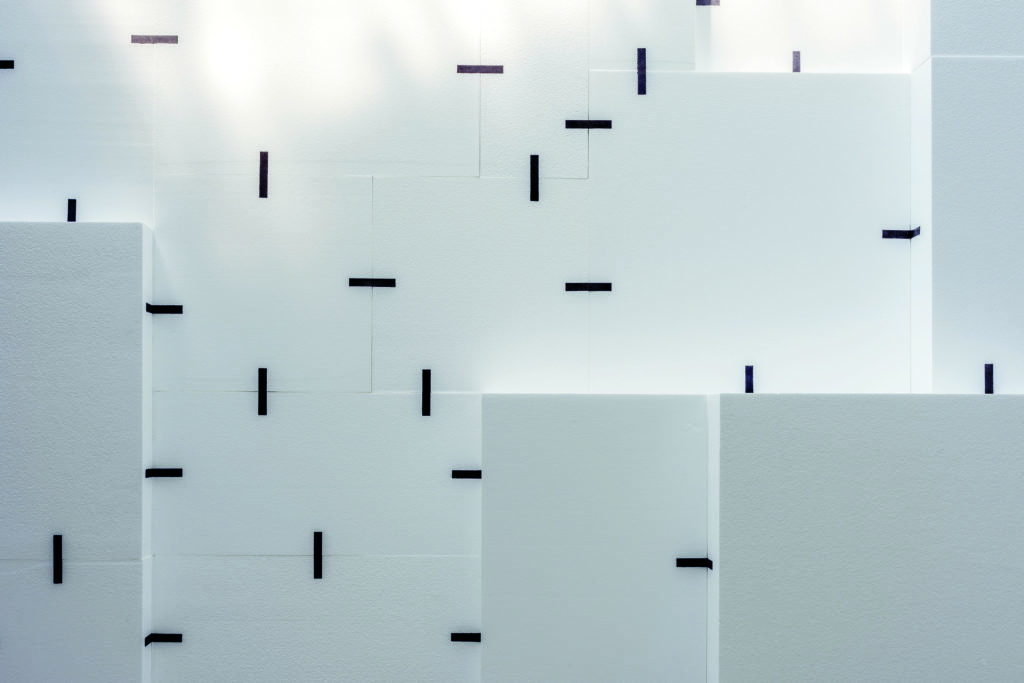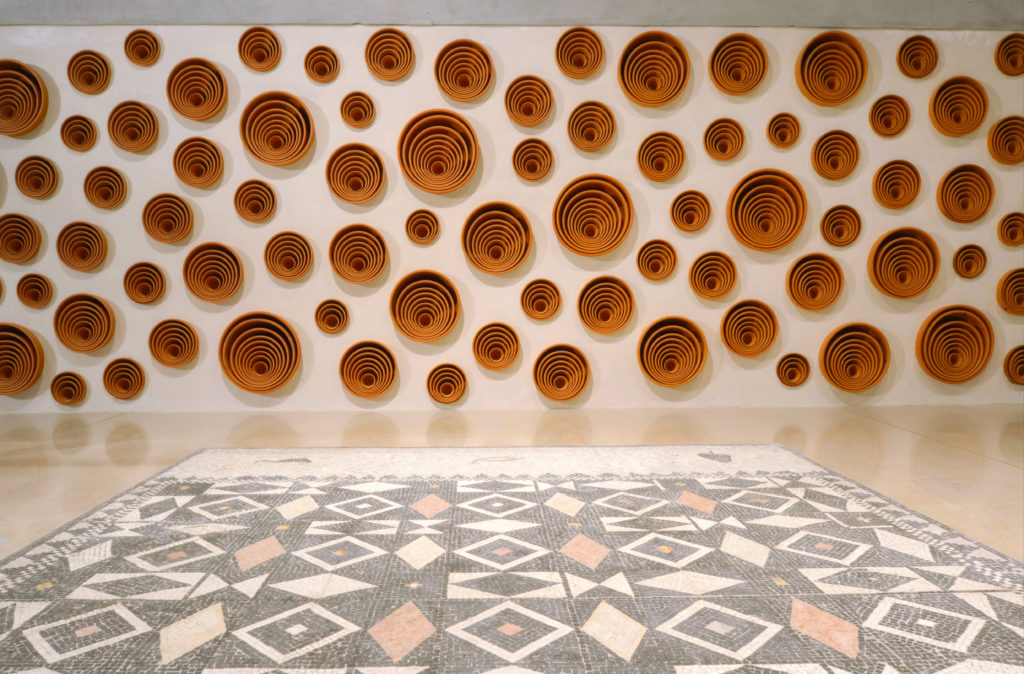
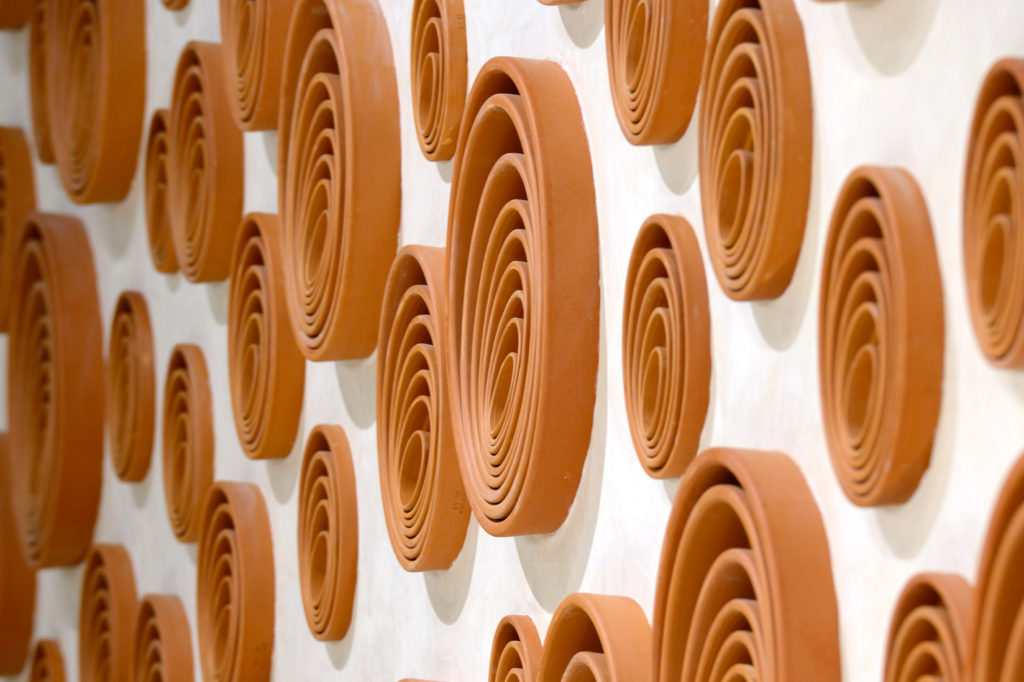
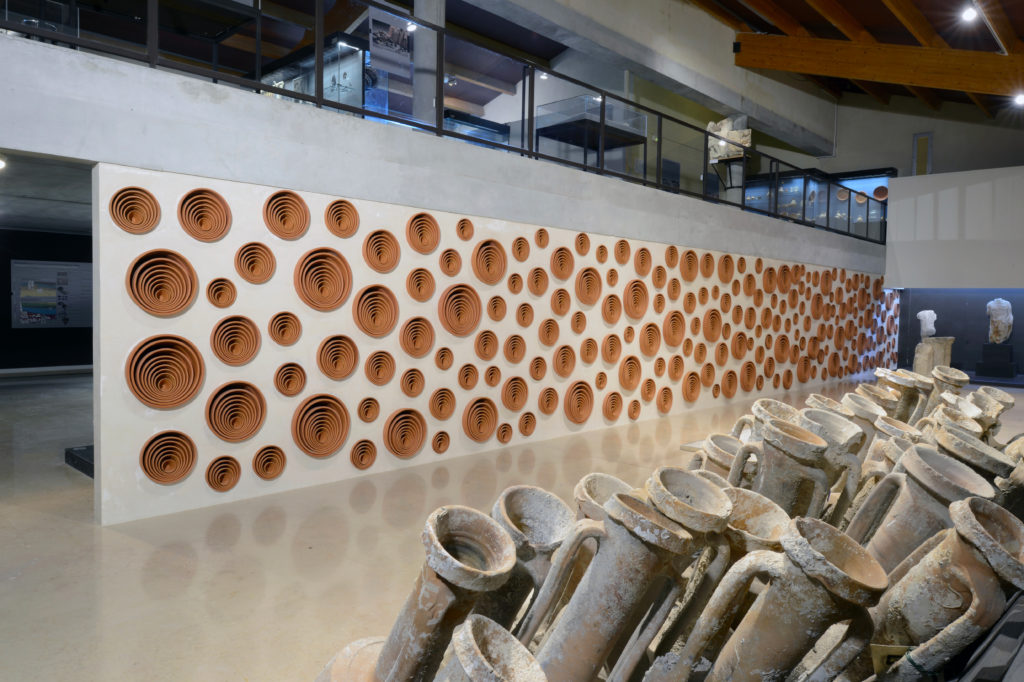
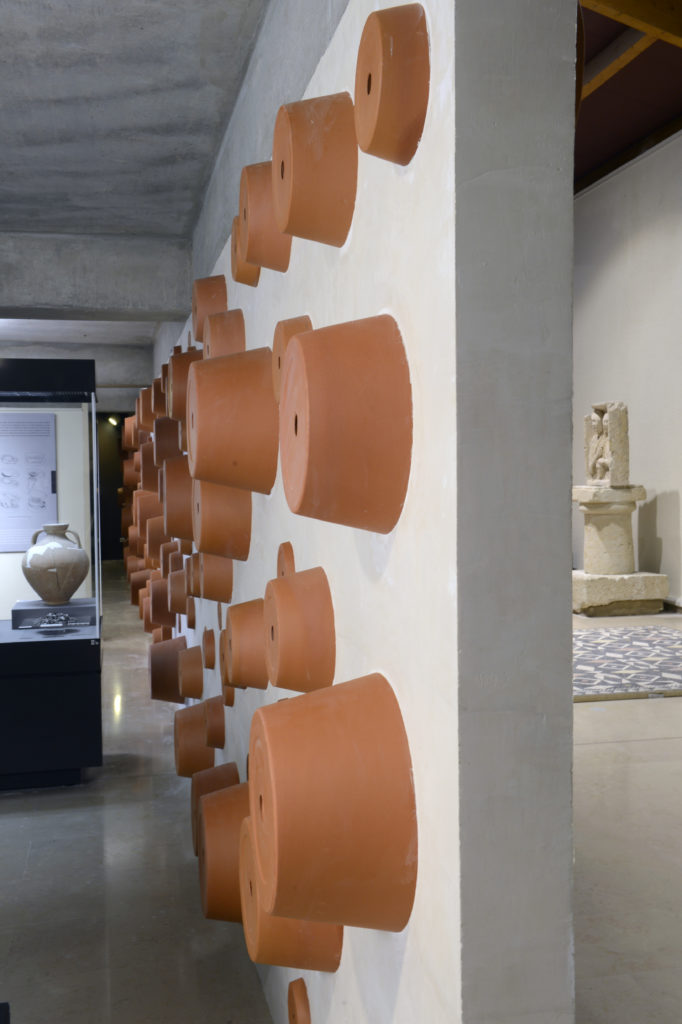
In 2013, 30 years after the creation of the “Fonds Régionaux d’Art Contemporain”, the FRAC Languedoc-Roussillon asked the Henri Prades Museum to participate in a programme designed to highlight the regional collections. Adjacent to the archaeological site of Lattara, the museum aims to show the daily life of the city in ancient times
The museum then organised a contemporary art exhibition devoted to Hubert Duprat and asked him to imagine a work in dialogue with the archaeological collections. Hubert Duprat proposed an installation made up of a thousand industrial clay pots set into a 20-metre long plaster wall that divided the space dedicated to the permanent collections. The regular and almost hypnotic pattern thus produced provides a contemporary and poetic counterpoint to the ancient objects, particularly the amphorae that faces it.
